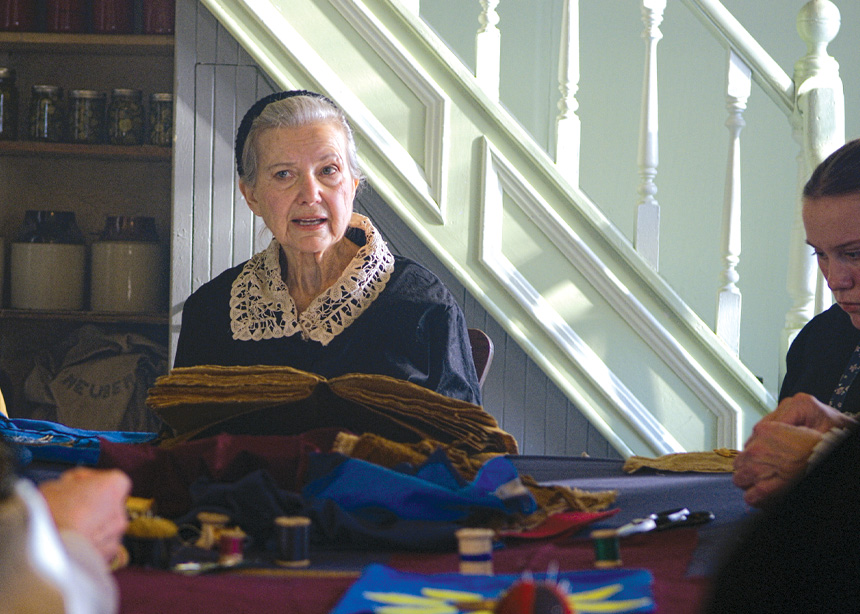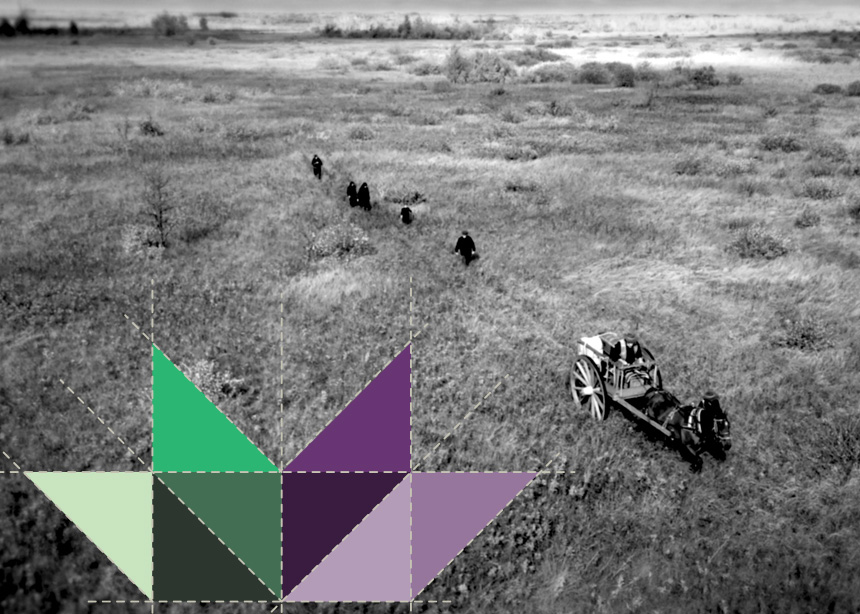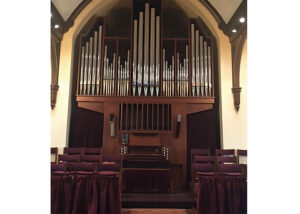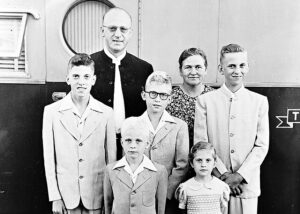Toronto filmmaker Dale Hildebrand has lots on the go. In late November, he was preparing for a hospital series, had just shot a TV pilot for an Indigenous cop show and was looking ahead to work on a Western and a horror–sci-fi–thriller “type of thing.”
“I’m all over, but I just love the idea of being able to tell stories and play,” said Hildebrand.
His latest film, Where the Cottonwoods Grow, is a full-length documentary telling the story of the Mennonite migration from Imperial Russia to southern Manitoba in 1874. Hildebrand, who grew up on a farm near Halbstadt, Manitoba, had wanted to tell a Mennonite story for decades, even writing a dramatic, “post-Bolshevik revolution” script years ago.
“Like a Dr. Zhivago. It could never get off the ground because it’s such a big-budget thing, but I thought, someday I want to do something on the Mennonites, and both my wife and my sister were saying, ‘Why don’t we try it?’”
Hildebrand directed and produced the film and co-wrote it with his older sister, Eleanor Chornoby, who is cast in the film as a woman reading about the epic journey to a group of other women working on a patchwork quilt 50 years later. Patches are sewn as the journey unfolds in the film, said Hildebrand.
“Each chapter, theoretically, is another patch in the quilt, so by the end of the film, we’ve made the quilt, we’ve told the story” he said.
Aiming for a Ken Burns–style film, Hildebrand relied heavily on archival photos. But to “amp it up,” he used video gaming software to recreate parts of the journey in the film.
The ocean crossing, the grasslands of Russia–Ukraine and the Red River steamboats are all visually resurrected into three dimensions using software, with the Atlantic ship reconstructed using the original blueprint found in a shipyard in England.

Hildebrand and Chornoby described the hardships and loss experienced by Mennonites on the 20,000-kilometre journey as a “tragedy that continued to test the very fabric of their faith.”
“The hardship really hit home with me. I mean they went out into the unknown,” said Hildebrand. “They really didn’t know what they were going into. Imagine that—the first 65 families landing in a water-infested land that is filled with mosquitos and, in their minds, nothingness.”
Hildebrand highlights the interactions between the Mennonites and the Métis, who had formed a provisional government in Manitoba in 1869 and who were helpful guides to the newcomers, and the realities of Treaty 1 and its Indigenous signatories.
“All of these parties were caught in the crosshairs of colonization, of nation-building, so I tried to embrace that by showing the positive aspects but not white- washing the negative ones,” he said.
The film features scenes and interviews on location in the Friesen Barn Interpretive Centre and Herds- man’s House in Neubergthal, Lower Fort Garry and Mennonite Heritage Village. Ten people are inter- viewed in the film, including Mennonite archivist Conrad Stoesz and Chief Ogima Peter YellowQuill.
Hildebrand said he now knows more about his own Mennonite roots. He sees the Mennonite migration as an international story that other cultures can relate to. “As you grow older, you grow to appreciate your roots, and that’s what this is about: the sense of how roots really are a profound aspect of our growth and our understanding of each other and who we are as a society.”
Where the Cottonwoods Grow was supported by ten partners, including the Canadian and Manitoba governments, the Plett Foundation, Mennonite Heritage Archives and the Manitoba Mennonite Historical Society.
Confirmed upcoming showings of the film include Fort Garry Mennonite Brethren Church in Winnipeg on January 26 and First Mennonite Church in Edmonton on March 1.
Chornoby said they are also in discussion about further screenings with church groups in Germany, Mexico, Belize and Paraguay, as well as groups across Canada and the U.S.
The past is more popular
Waiting for the documentary to begin, someone beside me quipped, “I can’t remember the last time I was in a church that was so full.”
Indeed. Mennonites in Manitoba are in the midst of a wave of commemorations. And we seem to love it.
We recently passed the 100th anniversary of the Russlander migration. Last year we marked 150 years since the Kanadier migration. This year we will recognize 500 years since the first adult baptism, inaugurating Anabaptism. And while I’m at it, 2026 will see First Mennonite Church of Winnipeg celebrating its 100th anniversary.
While my own personal history has a place in all these events, I find myself wrestling with tensions and unease as I process these commemorations.
And this was the case viewing Where the Cotton- woods Grow. To be clear, I enjoyed the film, the acting, the cinematography and the personal narratives as well as the addition of some of the complexities of Mennonites gaining freedoms at the cost of Indigenous displacement.
However, I personally could not always connect the dots. The narrative was set and told at a table of women creating a quilt from diverse pieces. In addition, the familiar language of seeds and roots was evoked to speak of the endurance and need of tradition and values. These stock metaphors are meant to do work that remains unclear to me, other than the general understanding that people have gone through hard things.
I was left wondering if the faith that drove the Mennonites of 1874 still informs us.
Would we want it to?
Is it fair to simply extract what noble themes of perseverance and community feel comfortable to us?
While most churches connected to the history in the film continue to decline, many Mennonites love to hear of their culture and history.
Telling history is a complicated and endless task. The enduring and dynamic nature of faith is also ongoing. Where the Cottonwoods Grow is a helpful contribution to this ongoing work.
David Driedger is leading minister at First Mennonite Church in Winnipeg.









Leave a Reply
You must be logged in to post a comment.